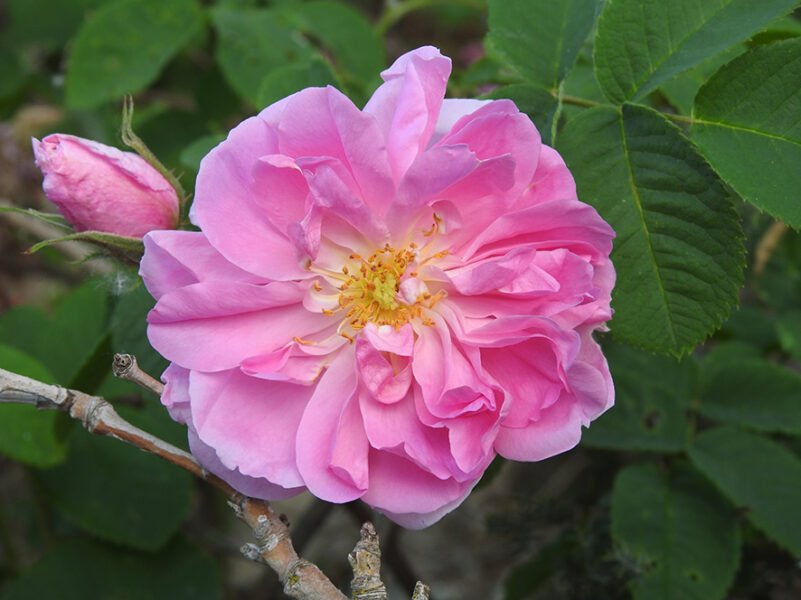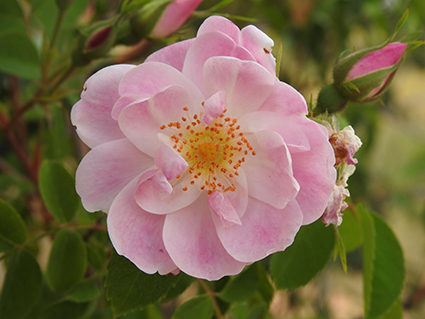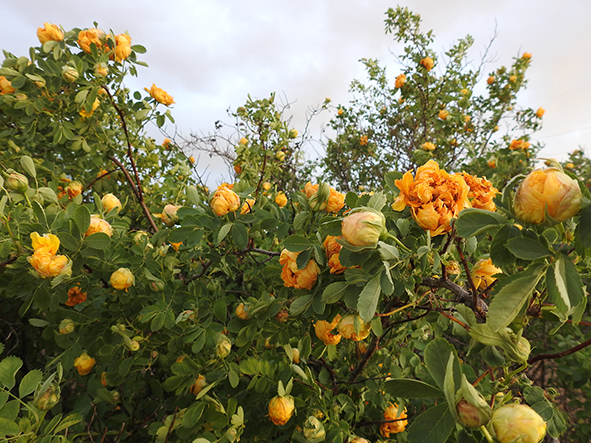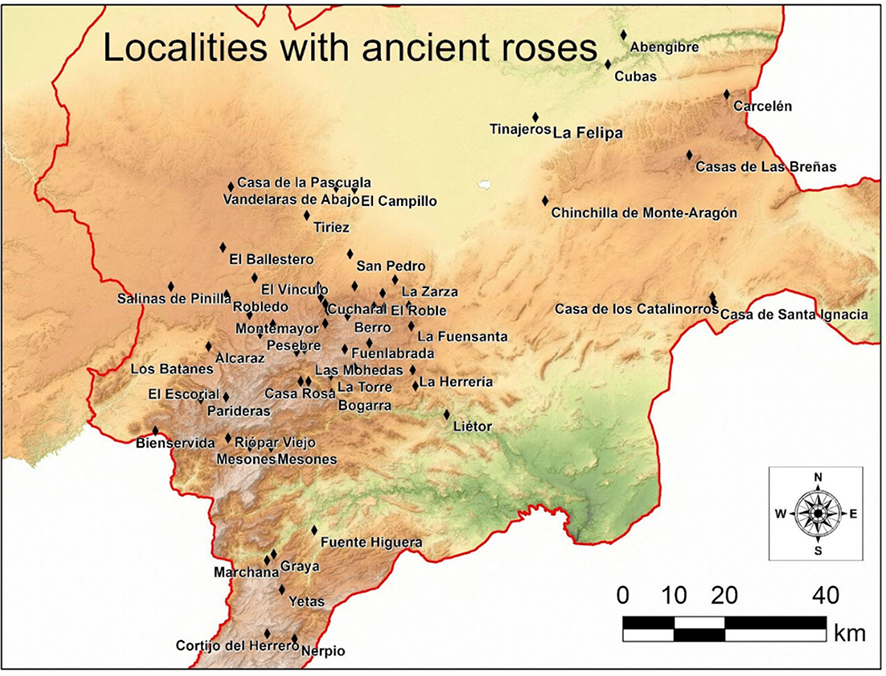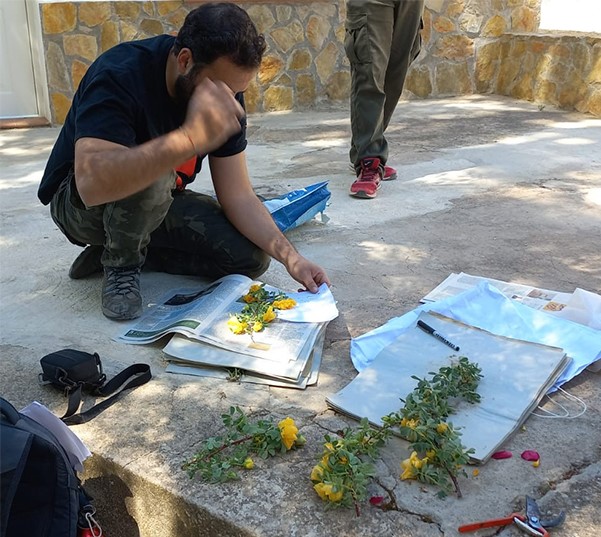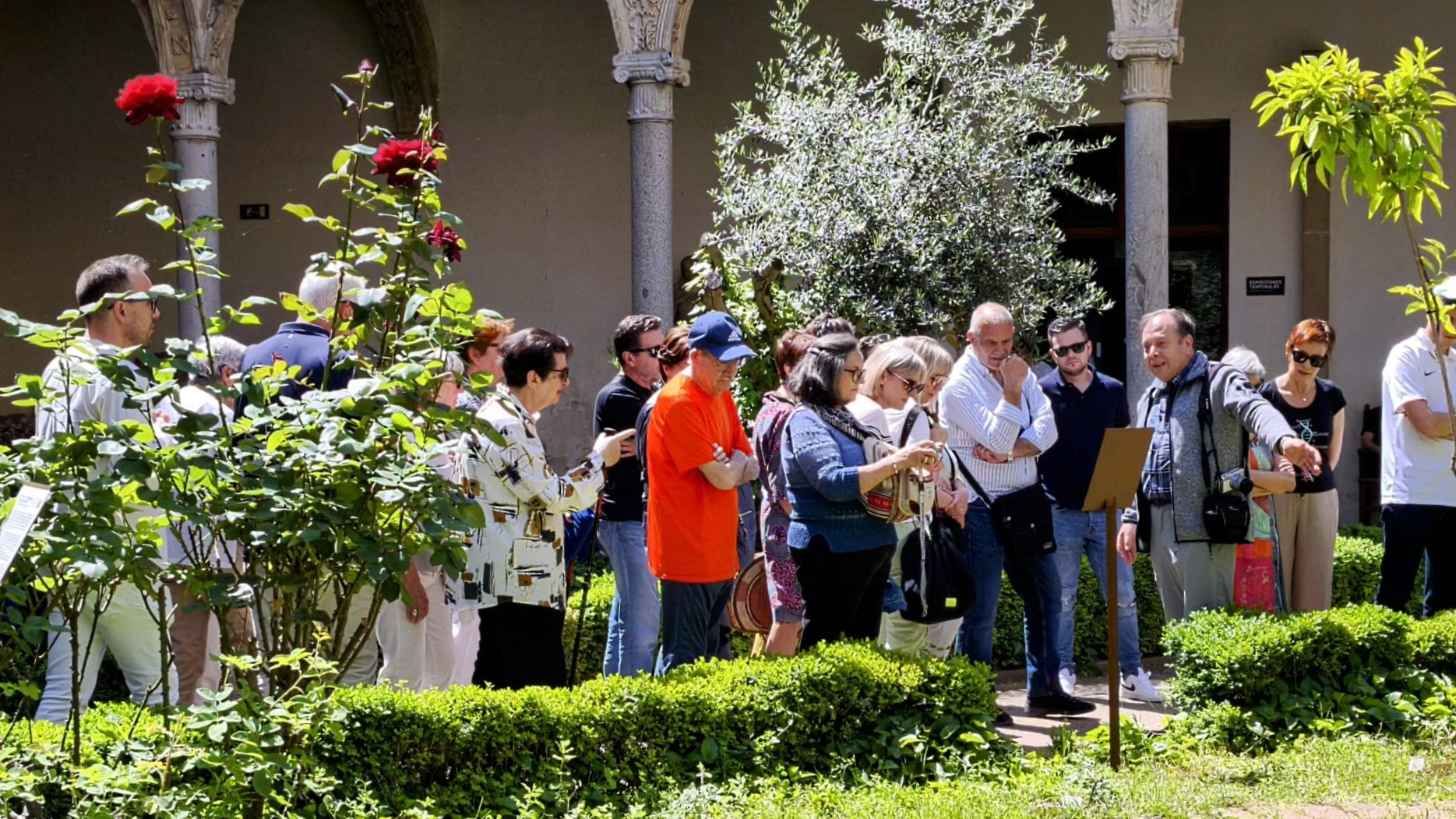Authors: Rodrigo Roldán, Alonso Verde, Diego Rivera, José Luis Escobar, José Fajardo, Arturo Valdés, Segundo Ríos, Concepción Obón, Pedro Sánchez-Gómez, José Luis Cánovas, Emilio Laguna y José R. Ruiz.
What are ancient roses?
Within the ancestral link between people and plants, there is a small group of plants that often escape the conservationist radar of naturalist associations and the administration: plants that have been cultivated by man since ancient times. This group does not include the modern roses we know today, cultivated since 1867 with the appearance of the first modern cultivated rose, called La France. These modern roses are known as ‘tea roses’ or ‘hybrid tea roses’, they are remontant (they flower several times a year), characterised by producing large flowers with showy colours. 1867 is therefore a key year dividing modern and ancient roses.
In contrast, ancient roses date back to the time of Minoan or Cretan art, some four millennia ago, with depictions of Rosa gallica found in the frescoes of the House of the Frescoes. They are even mentioned in Homer’s Iliad, where the body of Hector of Troy was anointed with rose balm before burial (around 1200 BC).
These unique roses have been cultivated and exchanged over generations and even millennia but today, overshadowed by modern roses (which, as mentioned, are easier to grow and bloom almost year-round), they have been largely relegated and, in many cases, abandoned. They can still be found in depopulated areas of Castilla–La Mancha, often growing in deserted villages, old farmsteads (quinterías or cortijos), or in small rural towns. In urban areas and Spanish provinces that have experienced more intense urban development, they have all but disappeared.
Background of the Project
The Association of Friends of the Botanical Garden of Castilla-La Mancha works in collaboration with several experts who have contributed to the development of the Spanish Inventory of Natural Heritage and Biodiversity specifically, the Spanish Inventory of Traditional Knowledge related to Biodiversity, a national project that compiles knowledge associated with this field. Thanks to this work, and the ethnobotanical and botanical expertise of these researchers, the potential richness of ancient roses in the province of Albacete became evident, highlighting the need to study and preserve them through citizen science initiatives. Beyond the academic contribution of these experts, the Ancient Roses Project would not have been possible without the involvement of numerous volunteers, each bringing diverse backgrounds and knowledge of old roses. The Association of Friends of the Botanical Garden of Castilla-La Mancha, which has more than 150 members and a mission to promote the value of regional flora in all its dimensions, has taken on the responsibility of leading this effort.
What is Citizen Science?
Citizen science is a research approach in which citizens people who are not necessarily trained scientists or professionals actively participate in the research process by collecting, analysing, or interpreting data. This type of science is defined by collaboration between scientists and the general public, with the aim of addressing scientific, environmental, social, or health-related questions.
The Ancient Roses Project in the Province of Albacete is composed of two subprojects, funded by the Instituto de Estudios Albacetenses.
First project funded by the Instituto de Estudios Albacetenses (IEA)
Through the 2022 research grants from the Instituto de Estudios Albacetenses, the first project was launched under the title: Ancient Roses in the Province of Albacete, a Biocultural Heritage to Protect and Recover through Citizen Science.
A total of 68 populations were identified (with nearly 80 localities visited), comprising 12 taxa, one of which may be new to science. It is worth noting that a taxon is a scientific term used to classify living organisms, at ranks equal to or below the species level. In our case, we have recorded not only species but also hybrids and varieties, which is very common in plants cultivated by humans.
Below is a map of the localities found during this first project, which was presented at the 4th Mediterranean Plant Conservation Week international conference (Valencia, October 2023).
Second project funded by IEA
Through the 2024 IEA Research Grants, the project Recovery and Recreation of Medieval Gardens in the Province of Albacete through Ancient Roses was launched.
This project is a continuation of the previous one, with the same objectives but involving greater collaboration with public and private entities. In addition to donating plant material to these organizations, priority will be given to establishing cultivation spaces. By May 2025, over 110 populations of ancient roses have already been identified.
Objectives
Our objectives were not only to locate the roses, but also to geolocate them, photograph them, monitor them, and collect live reproductive material from them: cuttings and root plants.
-
- To increase the inventory, already started in 2022, of the geolocation map of all the populations of old rose bushes in the province.
- To learn about traditional management techniques.
- Propagate them, through cuttings or directly from the roots, donating them to institutions such as the Botanical Garden of Castilla-La Mancha, the garden ‘Pasión de las Rosas’ or the Botanical Garden of Torretes of the University of Alicante or to some town councils that have shown interest, such as Higueruela. The second project also aims to recreate small medieval gardens (Christian or Andalusi).
- To leave samples of Pliegos for the ALBA Botanical Herbarium of the Botanical Institute of Castilla-La Mancha.
- Disseminate knowledge through publications, congresses, social networks, etc.
Propagation and conservation
By collecting live samples, by cuttings or by ‘bare root’ extraction. Five or six trips are made every year to different points in the province of Albacete (among the populations already mapped).
Dissemination
The results of the project and activities are regularly announced through social media. The project has been taken to two international conferences:
- IV Mediterranean Plant Conservation Week Valencia (October 2023).
- XVII Congress of the Ibero-Macaronesian Association of Botanical Gardens (May 2024).
In the scientific field, an article has been published in issue no. 18 of the journal Sabuco of the Instituto de Estudios Albacetenses, which can be consulted online.
Some results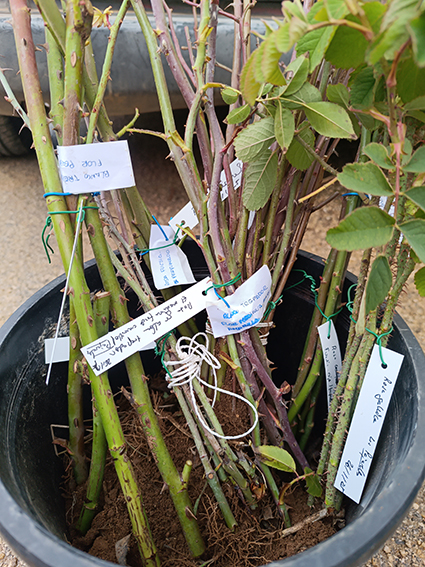
- 100 core herbarium sheets deposited in the ALBA Herbarium (registered in Index Herbariorum).
- 600 cuttings made until 2024. 400 cuttings during 2025. The El Sembrador Foundation has been instrumental in propagating these cuttings and sharing them.
- More than 1,200 photographs.
- 20 interviews conducted.
- More than 110 populations georeferenced.
- Twelve different taxa identified (botanical categories at or below the species level).
- Installation of medieval rose garden recreations at the archaeological site of La Graja, Higueruela Park, and the main courtyard of the Museo de Santa Cruz.
Species Planted in the Main Courtyard of the Museo de Santa Cruz
The Islamic Culture Foundation (FUNCI) and the Museo de Santa Cruz (Junta de Comunidades de Castilla-La Mancha) have supported and promoted this project by establishing a rose garden featuring a selection of these Rosa species. This garden has been incorporated into the Andalusian botany itinerary that the museum hosts within its landscaped areas, specifically in the main courtyard. The roses planted so far, donated by the Association of Friends of the Botanical Garden of Castilla-La Mancha, are as follows:
- Rosa x alba L.
- Rosa gallica L.
- Rosa x damascena Herrm.
- Rosa foetida var. persiana (Lem.) Rehder.
- Rosa bicolor Jacq.
The inauguration of the medieval rose garden, part of the project “Recovery and Recreation of Medieval Gardens through Ancient Roses”, took place in the courtyard of the Museo de Santa Cruz on May 18, 2025, coinciding with International Museum Day.
The presentation was delivered by Antonio Dávila, Director of the Museo de Santa Cruz; Encarnación Gutiérrez, Secretary General of the Islamic Culture Foundation (FUNCI); Alonso Verde, President of the Association of Friends of the Botanical Garden of Castilla-La Mancha; and Diego Rivera, Professor of Botany and a key figure in the scientific progress of the project. This was followed by a guided tour led by Sergio Isabel Ludeña, Scientific Coordinator of the Centre for Studies on Islamic Toledo (FUNCI), who, together with Alonso Verde and Diego Rivera, introduced other trees and shrubs along Toledo’s Andalusi botany itinerary and their connection to the city’s medieval past.
This post is available in: English Español

